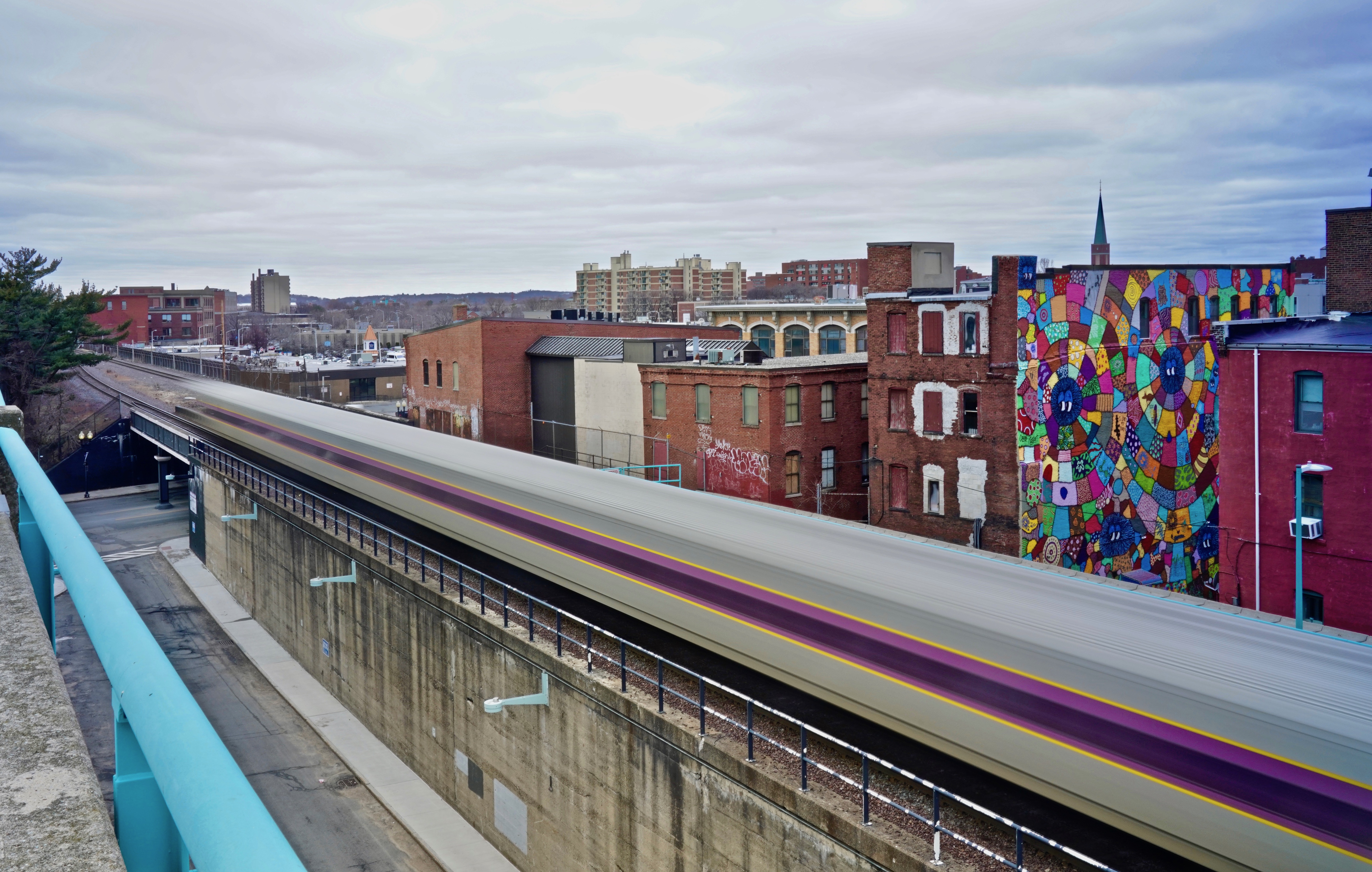
A major new study from the nonpartisan think-tank MassINC finds that vacant and underutilized land surrounding 13 Gateway City commuter rail stations could house up to 230,000 residents and 230,000 jobs-double the number of people living and working in these station areas today.
Decades of disinvestment have made it difficult for private real estate markets to capitalize on opportunities for infill development around the valuable rail infrastructure in these cities. The nature of commuter rail service is also problematic. Fares have become cost-prohibitive for many, and service is often slow, infrequent, and unreliable. The study points to Census data that show only about one in every 50 residents living near a Gateway City station takes a train to work; the commuter rail system’s lowest performing stations on this measure are all located in Gateway Cities.
The report recommends lowering commuter rail fares for those living and working in Gateway Cities, offering financial incentives to spur initial residential and commercial development in inactive downtown station areas, and improving service as ridership grows.
“If nobody is using the train, that tells us it isn’t adding any value to the surrounding real estate,” says Ben Forman, MassINC’s research director and an author of the study. With the right policies, he believes Massachusetts could alter this dynamic and get the kind of transit-oriented development (TOD) that is going up in and around Boston to occur in these depressed real estate markets.
If this were to occur, daily commuter rail boardings would increase by 25 percent, generating an additional $81 million in fare revenue for the MBTA. While the lower fares proposed would partially offset this gain, the study recommends compensating the MBTA for these losses through revenues associated with policies that are on the drawing board to limit greenhouse gas (GHG) emissions. Accommodating future growth in these walkable urban centers with existing transit would reduce GHG emissions by an estimated $126 million annually, according to the study.
This new research comes at a time when transportation leaders are busy assessing how to invest in the state’s road and rail network to support future growth. One component of this discussion is what changes should be made to commuter rail before MassDOT negotiates the next long-term operating contract for the system, which is scheduled to commence in 2022.
According to Lynn Mayor Tom McGee, it’s important that state leaders consider this new information as they plan for the future. “Massachusetts needs more space for both commercial and residential growth. Gateway Cities like Lynn have capacity to accommodate millions of square feet of mixed-use development around our existing rail infrastructure.”
Within a half-mile of Lynn’s station, the study finds potential for nearly 20 million square feet of additional development.
Forman says: “Too often we think about transit and economic development investments independently. In order to get the most from the billions of dollars we commit to operating commuter rail along these right-of-ways, it’s critical to think about what mix of policies could spur reinvestment in these older urban areas.”
Sal Lupoli is a pioneering real estate developer who has had early success in Lawrence and Lowell and believes in the value of transit-oriented developments near commuter rail stations. “If we want to create opportunities for economic development and sustained growth in every corner of the Commonwealth,” he says, “we need to take a fresh look at how we get more people living and working in affordable Gateway Cities up and down our commuter rail lines.”